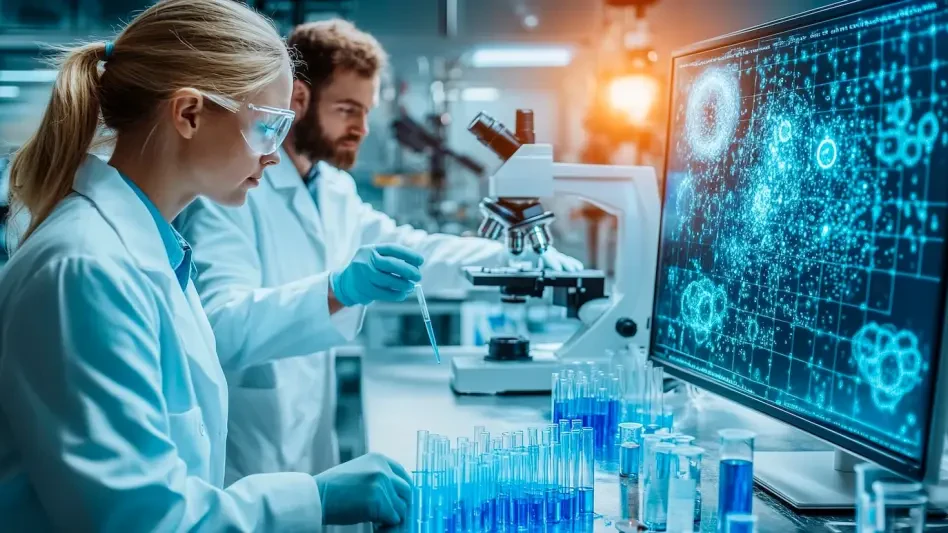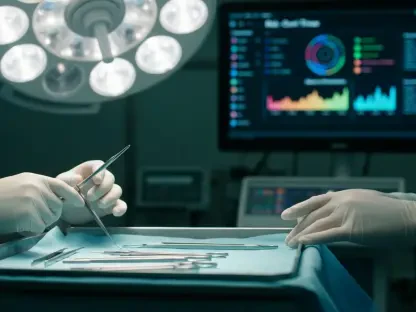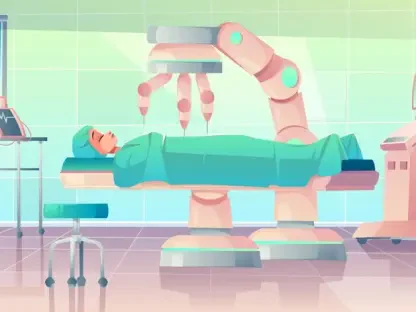In this insightful discussion, we delve into the world of predictive maintenance with Faisal Zain, a healthcare expert specializing in medical technology. He brings a wealth of experience in manufacturing medical devices used for both diagnostics and treatment, driving innovation in the field. As the conversation unfolds, we explore the nuances of maintenance strategies, the transformative impact of predictive technologies, and the future implications for biopharmaceutical operations.
Can you explain the traditional preventive maintenance approach and its limitations in the biopharma industry?
Preventive maintenance has been the cornerstone of equipment care, based on fixed schedules rather than actual equipment needs. While it aims to reduce equipment failures, its arbitrary nature can result in unnecessary intervention, leading to downtime and wasted resources. In biopharma, where precision is critical, such inefficiencies can harm not only process flow but also product safety and quality.
How does reactive maintenance pose risks to critical systems, especially in sectors like biopharma?
Reactive maintenance—or addressing problems only as they arise—can be particularly risky for biopharmaceutical operations. These systems are integral to healthcare delivery, so failure can disrupt service continuity, increase costs, and jeopardize critical processes like vaccine storage. The unpredictable nature of reactive maintenance can lead to catastrophic system failures, with far-reaching effects.
What are the consequences of equipment downtime in the biopharma industry, particularly concerning refrigeration equipment?
Downtime of refrigeration equipment in biopharma can compromise the safety and efficacy of vaccines and medications, leading to product spoilage. This not only impacts patient health and safety but can also disrupt global supply chains, resulting in increased operational costs and a loss of community trust.
Can you define predictive maintenance and its key components?
Predictive maintenance revolutionizes equipment care by utilizing technologies such as wireless IoT sensors, machine learning, and AI. These components monitor and analyze real-time data like temperature, pressure, and vibrations to detect anomalies before failures occur, thus allowing focused and timely interventions to maintain optimal equipment health.
How do technologies such as IoT sensors, machine learning, and advanced analytics contribute to predictive maintenance?
These technologies enable continuous monitoring and capture of equipment performance data, allowing for advanced analytics to forecast issues before they happen. IoT sensors provide constant real-time monitoring, while machine learning and AI process vast amounts of data to highlight deviations from normal patterns, aiding in proactive maintenance decision-making.
What are the benefits of replacing time-based schedules with condition-based insights in equipment maintenance?
Shifting from time-based to condition-based maintenance allows organizations to allocate resources more efficiently by focusing maintenance efforts only when equipment health warrants it. This minimizes unnecessary interventions, reduces downtime, enhances equipment longevity, and supports sustainability by optimizing energy and resource use.
How does predictive maintenance help in detecting early signs of equipment failure?
Predictive maintenance systems analyze continuous data streams to identify patterns that signal impending malfunction. By catching these subtle warning signs early, maintenance can be scheduled to cleverly address potential issues before they escalate, thereby avoiding failures and service interruptions.
What specific advantages does predictive maintenance offer over traditional maintenance methods?
Predictive maintenance offers precise, data-driven insights that traditional methods lack. It enhances equipment reliability, reduces unexpected breakdowns, and minimizes costly downtime. It also streamlines maintenance processes, making interventions more strategic and less disruptive.
How does predictive maintenance enhance operational efficiency for organizations reliant on refrigerated systems?
Through early detection of potential failures, predictive maintenance ensures refrigerated systems operate without interruption. It optimizes energy consumption and resource allocation, leading to fewer emergencies and better managed operations, essential for maintaining service quality and efficiency.
In what ways does predictive maintenance reduce the need for emergency equipment and related expenses?
By forecasting failures before they occur, predictive maintenance reduces the necessity of keeping spare equipment on hand “just in case.” This approach not only streamlines operations but also cuts storage and maintenance costs, channeling funds and resources more effectively.
How does predictive maintenance contribute to sustainable business practices?
Predictive maintenance optimizes energy usage and reduces waste, aligning closely with sustainability goals. By preventing undue equipment strain and minimizing resource use, it fosters more environmentally friendly operations and supports long-term business sustainability.
What role does predictive maintenance play in safeguarding life-saving products like vaccines?
Predictive maintenance ensures equipment—critical for storing vaccines and pharmaceuticals—functions within specified parameters. It prevents temperature deviations that can compromise product potency and integrity, thereby safeguarding public health and preserving product efficacy.
How does maintaining optimal equipment conditions impact the integrity and delivery of biopharma products?
Ensuring equipment remains in peak condition with predictive maintenance mitigates risks of deviation in environmental controls, thus protecting product quality. It accelerates timelines for product delivery by preventing spoilage and maintaining the stringent conditions required for regulatory compliance.
What assurances does predictive maintenance provide to healthcare providers and regulatory bodies?
Predictive maintenance offers precise control and accountability, ensuring equipment consistently meets stringent health standards. This enhances trust among healthcare providers and regulatory bodies and reflects a commitment to quality and reliability in healthcare operations.
What are the initial steps and investments required for transitioning to predictive maintenance practices?
Transitioning involves initial investments in technology like sensors and analytics software, coupled with training for staff and adjustments in workflow. Planning a strategic roadmap that aligns predictive practices with organizational goals is crucial to maximize return on investment.
Can you discuss some of the challenges organizations might face when adopting predictive maintenance?
Challenges include the upfront costs for technology and potential disruptions during implementation. Organizations may also encounter resistance to change from stakeholders accustomed to traditional methods. Overcoming these requires clear communication and demonstrated proof of long-term benefits.
How does predictive maintenance optimize operations and protect critical resources in biopharma?
By proactively addressing potential equipment failures, predictive maintenance maximizes uptime, enhances resource allocation, and ensures critical processes remain uninterrupted. This approach protects both tangible assets and intangible resources like brand reputation and trust.
What are the broader implications of predictive maintenance for the future of the healthcare industry?
Predictive maintenance represents a shift toward more reliable and digitally-integrated healthcare practices. Its adoption can enhance service delivery, improve patient safety, and foster sustainable growth, positioning the industry toward more resilient and advanced methodologies.
How does predictive maintenance align with the values of integrity, quality, and resilience in your organization, Predictive Monitor?
Predictive Monitor’s value system is deeply rooted in ensuring that proactive measures drive operational excellence. Predictive maintenance embodies this by delivering quality service and resilient processes, guaranteeing the integrity of healthcare practices and products.
Can you share any success stories or case studies that highlight the effectiveness of predictive maintenance in the biopharma industry?
One notable success involved a biopharma facility where predictive maintenance significantly reduced refrigeration system downtime. By identifying subtle signs of temperature fluctuations early, critical vaccines remained potent, maintaining delivery schedules and protecting public health.
What advice would you give to organizations considering a shift to predictive maintenance systems?
I would advise organizations to embrace predictive maintenance as a strategic advantage by investing in the right technology and talent. Start with small pilot projects to demonstrate ROI, ensure buy-in from all levels, and foster a culture that embraces technology-driven change.









